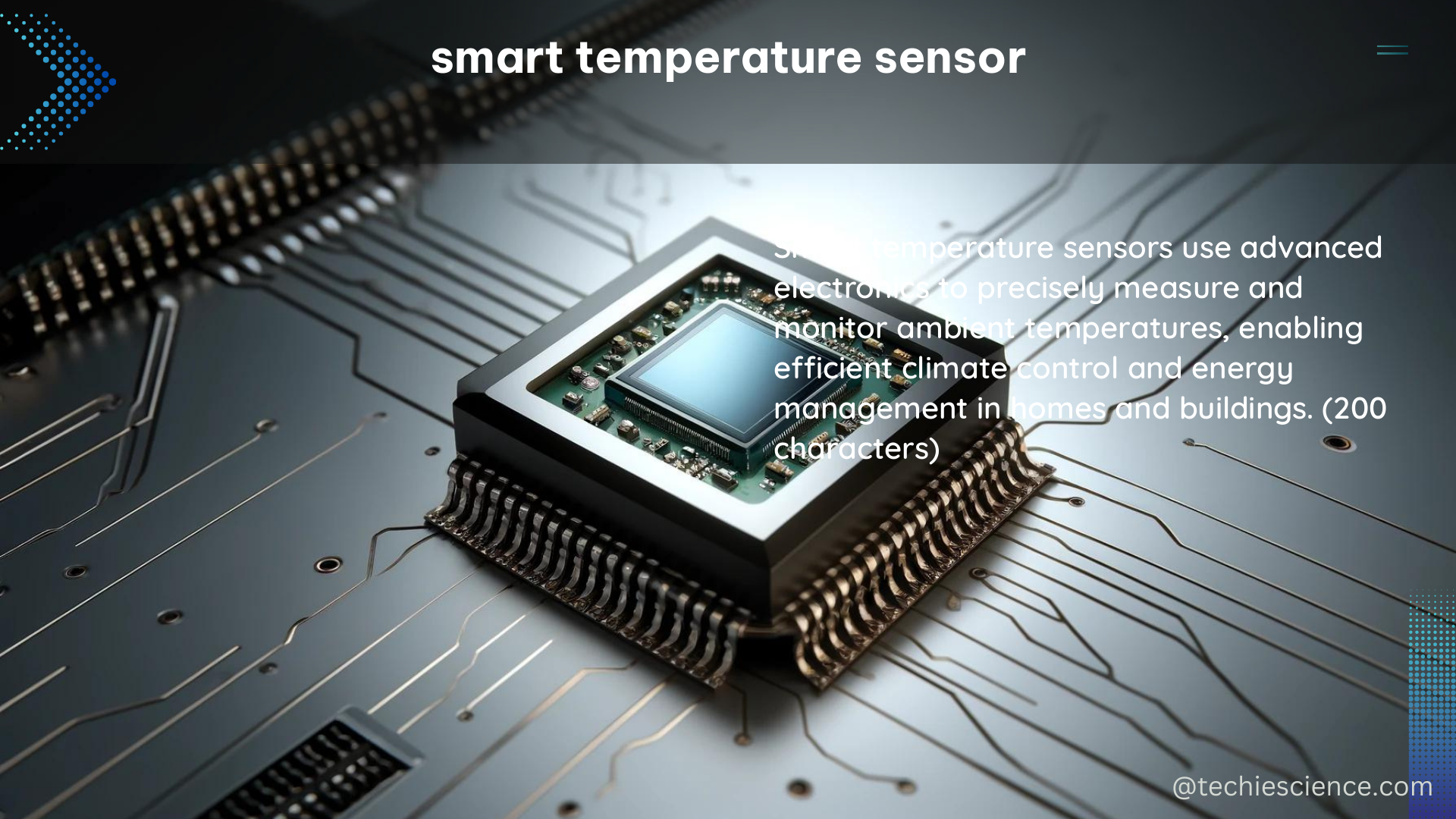Smart temperature sensors are revolutionizing the way we monitor and control temperature-sensitive environments. These advanced electronic devices measure the temperature of their surroundings and wirelessly transmit the data to a central hub or the cloud, enabling real-time temperature monitoring and control. From monitoring milk storage to regulating industrial processes, smart temperature sensors have become an indispensable tool in the Internet of Things (IoT) ecosystem.
Understanding the LM35 Temperature Sensor
The LM35 temperature sensor is a widely used smart temperature sensor in IoT applications. It has a measuring range of -55°C to 150°C, with an accuracy of ±0.5°C within the range of -10°C to +100°C. The sensor’s output voltage is linearly proportional to the Celsius temperature, making it easy to interpret and use in various applications.
| Specification | Value |
|---|---|
| Measuring Range | -55°C to 150°C |
| Accuracy | ±0.5°C (-10°C to +100°C) |
| Output Voltage | Linearly proportional to Celsius temperature |
The LM35 sensor’s accuracy can be affected by various factors, such as electromagnetic interference (EMI) and sensor malfunctions. To ensure reliable temperature measurements, it is crucial to understand the sensor’s performance metrics and how to evaluate the quality of the sensor data.
Evaluating Smart Temperature Sensor Data Quality

When working with smart temperature sensors, it is essential to assess the quality of the sensor data to ensure it meets the requirements of the application. Three key metrics to consider are:
-
Suitability: Refers to the sensor’s ability to measure temperature within the required range for a specific application. For example, in a milk storage monitoring application, the sensor must be able to measure temperatures between 0°C and 10°C.
-
Accuracy: Measures how closely the sensor’s measurements match the true temperature. Accuracy is typically expressed as a percentage or a range of acceptable values.
-
Completeness: Refers to the degree to which sensor data values are not missing for a given time window. Missing data can lead to gaps in the temperature monitoring and affect the overall effectiveness of the system.
In a study on the LM35 temperature sensor for milk storage monitoring, the sensor data was found to be accurate within the range of 28°C to 5°C, with some outliers. The completeness of the sensor data was also evaluated, with missing values defined as those not recorded for a given time window.
Factors to Consider When Selecting a Smart Temperature Sensor
When choosing a smart temperature sensor for your application, there are several factors to consider beyond the basic performance metrics:
-
Response Time: The time it takes for the sensor to produce a stable temperature reading after a change in temperature. Faster response times are crucial in applications where temperature changes rapidly.
-
Power Consumption: An important consideration for battery-powered devices, as a sensor that consumes too much power will need to be recharged or replaced frequently. The LM35 sensor has a typical power consumption of 60 μA, making it suitable for low-power applications.
-
Communication Protocol: The method by which the sensor transmits its data to the central hub or the cloud. Common protocols for smart temperature sensors include Wi-Fi, Bluetooth, and Zigbee, each with its own advantages and trade-offs in terms of range, power consumption, and data rate.
| Protocol | Range | Power Consumption | Data Rate |
|---|---|---|---|
| Wi-Fi | Up to 100 m | High | High |
| Bluetooth | Up to 30 m | Low | Medium |
| Zigbee | Up to 100 m | Low | Low |
By carefully considering these factors, you can select a smart temperature sensor that is well-suited to your specific application requirements, ensuring reliable and accurate temperature monitoring.
Practical Applications of Smart Temperature Sensors
Smart temperature sensors have a wide range of applications in various industries, including:
- Food and Beverage: Monitoring the temperature of perishable goods, such as milk, to ensure food safety and quality.
- Healthcare: Tracking body temperature in patients for early detection of illnesses or monitoring the temperature of medical equipment.
- Industrial Automation: Regulating the temperature of industrial processes, such as manufacturing or chemical production, to maintain optimal efficiency and product quality.
- Building Automation: Monitoring and controlling the temperature in buildings to optimize energy usage and improve occupant comfort.
- Agriculture: Monitoring the temperature of soil, greenhouses, or storage facilities to optimize crop growth and prevent spoilage.
In each of these applications, smart temperature sensors play a crucial role in providing real-time data, enabling informed decision-making and automated control systems.
Conclusion
Smart temperature sensors are transforming the way we monitor and control temperature-sensitive environments. By understanding the performance metrics, factors to consider, and practical applications of these advanced devices, you can unlock the power of precise temperature monitoring and control in your IoT ecosystem. Whether you’re working in the food and beverage industry, healthcare, industrial automation, or any other temperature-critical domain, smart temperature sensors offer a reliable and versatile solution to your temperature monitoring needs.
Reference:
- Evaluation of LM35 Temperature Sensor for Milk Storage Monitoring
- Comparative Analysis of Smart Temperature Sensor Technologies for IoT Applications
- Wearable Body Temperature Tool
- Sensor System
- What is Quantitative Data?

The lambdageeks.com Core SME Team is a group of experienced subject matter experts from diverse scientific and technical fields including Physics, Chemistry, Technology,Electronics & Electrical Engineering, Automotive, Mechanical Engineering. Our team collaborates to create high-quality, well-researched articles on a wide range of science and technology topics for the lambdageeks.com website.
All Our Senior SME are having more than 7 Years of experience in the respective fields . They are either Working Industry Professionals or assocaited With different Universities. Refer Our Authors Page to get to know About our Core SMEs.